“Ah-ah, boss, talking cap!” - smart helmet for production

We are developing the direction of wearable electronics: we work with bracelets, native biometrics, wearable RFID tags, there are mobile Holters for removing ECG for rescuers, and so on. The helmet was a logical continuation, because it is needed by many people. A helmet (more precisely, an IoT module that modifies any helmet) fits very well into the framework when there are production events and helmet events.
For example, now, when five people have already passed on the ACS turnstile, and only four in helmets, it is already clear what is wrong. Or when a worker climbed into a danger zone, where something is now working, the helmet can stop him shouting: “Stop, # $% @, where are you going?” - or immediately bang with electricity. The current, by the way, was checked with the doctors, but it was not included in the release. But flashes of light and vibration entered.
')
The module also includes satellite navigation, the fifth bluetooth for positioning in rooms and IoT (the helmet becomes the hub of all wearable sensors and removes data from all industrial devices such as machines nearby), an ultra-wide range for positioning and data transmission, and a bunch of slots for improvements like in Deus Ex .
In general, welcome to the world where a helmet can be smarter than a worker! Oh, and where it is relatively cheap.
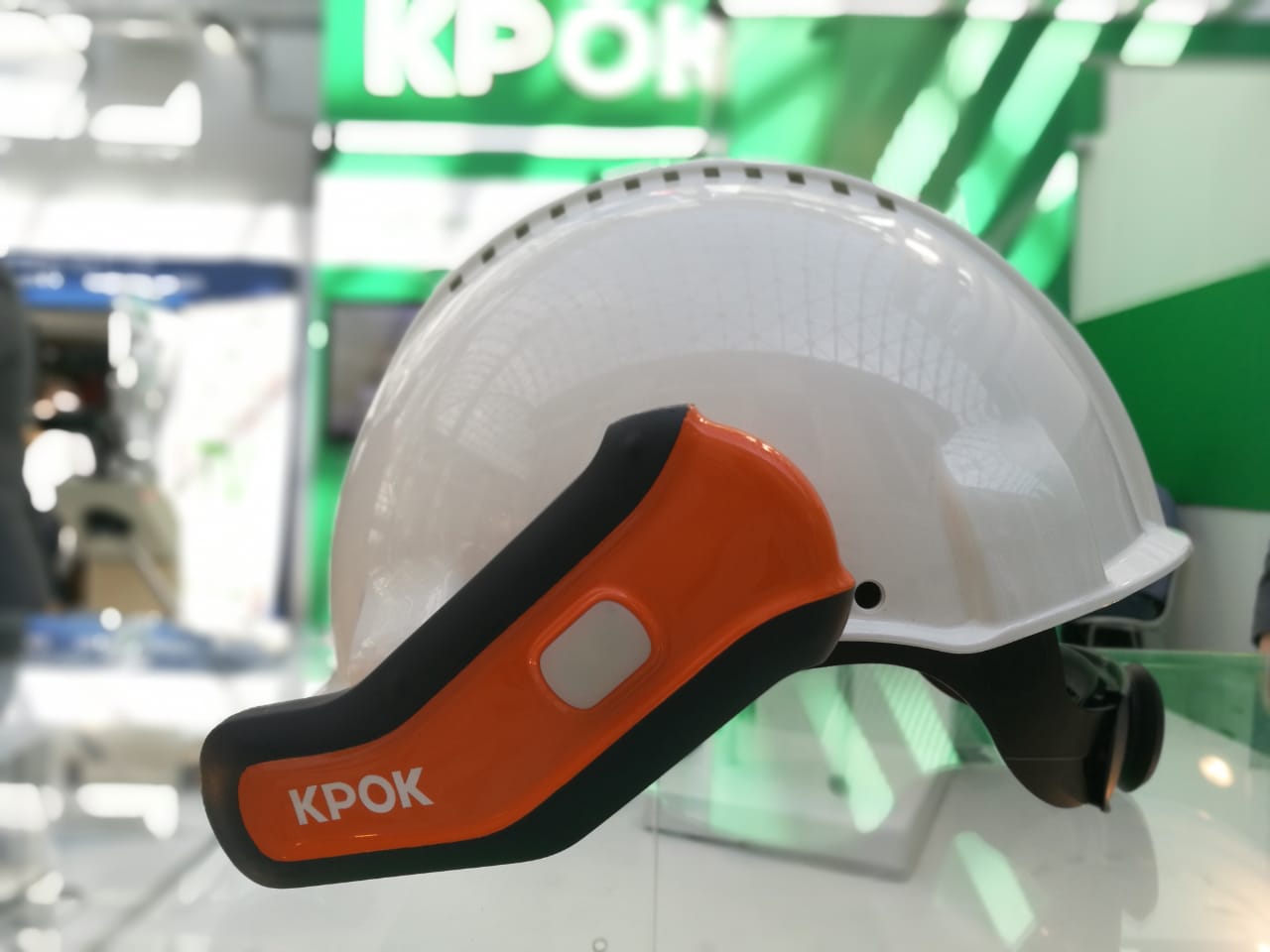
What are the practical tasks of a helmet?
- Ensuring safety in the workplace: falls, immobility, shocks are strong, because there is an accelerometer. He monitors the correct wearing (on the head and on the belt - different data).
- Tracking work. This means that when workers drink tea, the accelerometer shows other data than during movement. True, on the tests, the workers quickly realized what was going on and why they were fined (they used to sleep while a third of them were working), and hung their helmets on the dogs. That is, really, the dogs ran around the construction site in them, where the primary signal was from intranavigation. I had to retrain motion detectors. Dogs are now recognized. This is from the same opera, as the tractor driver pushes two tractors with buckets and winds their mileage, sipping juice on the sidelines.
- Alarm button. You can press a button, and it will call the guard, the police, the ambulance, the personnel officer, Sportloto, or Putin. The last two functions are not yet implemented.
- Entrance to hazardous areas. As I said, a helmet can blink into the eye and vibrate, supply current (not included in the release), prick with a needle (not enter the release) and beat into the jaw (not tested and not released). It is possible to make an additional sound.
- ACS - visible movement.
- Collision avoidance is an important thing for idiots to run away from loaders and other equipment. In collision avoidance mode, the helmet interacts with a radio module installed, for example, on a loader. It was tested on several productions. In the tests there were warnings with the sound and light of the idiot and the operator of the equipment. And they also invented sending a message “Bonus for artistic impression” for matching the coordinates of the helmets to the one who moved to the match faster.
- Lone worker (single worker) - a helmet asks once every N minutes (15 by default), how are you doing. You need to press a button to shut it up. If you do not answer, then it calls for help.
- Transmit information from wearable devices: heart rate monitors, body temperature, ambient temperature, various sensors such as gas analyzers. Here she acts as a repeater.

- Dynamically changing danger zones - data from working equipment, gas analyzers, and so on. The helmet can read them directly (if there is an interface) or through production systems through the API and raise an alarm.
- To write tracks are tasks of labor productivity, control of execution of tasks and so on. For example, bypass control. Now equipment bypasses are implemented by scanning barcodes or RFID tags on machines. I know a lot of stories when a man lays out tags on the workplace or kuar prints and scans them lazily. Here you can not fool.
- Search for witnesses. You can lose the incident and record who witnessed. You need to raise a person in your career and help: you can contact the closest people.
- Evacuation - alert staff with a light signal on the module. Plus, you can send text messages on the bracelet like "everything is going there and that."
Here are two minutes about how it works:
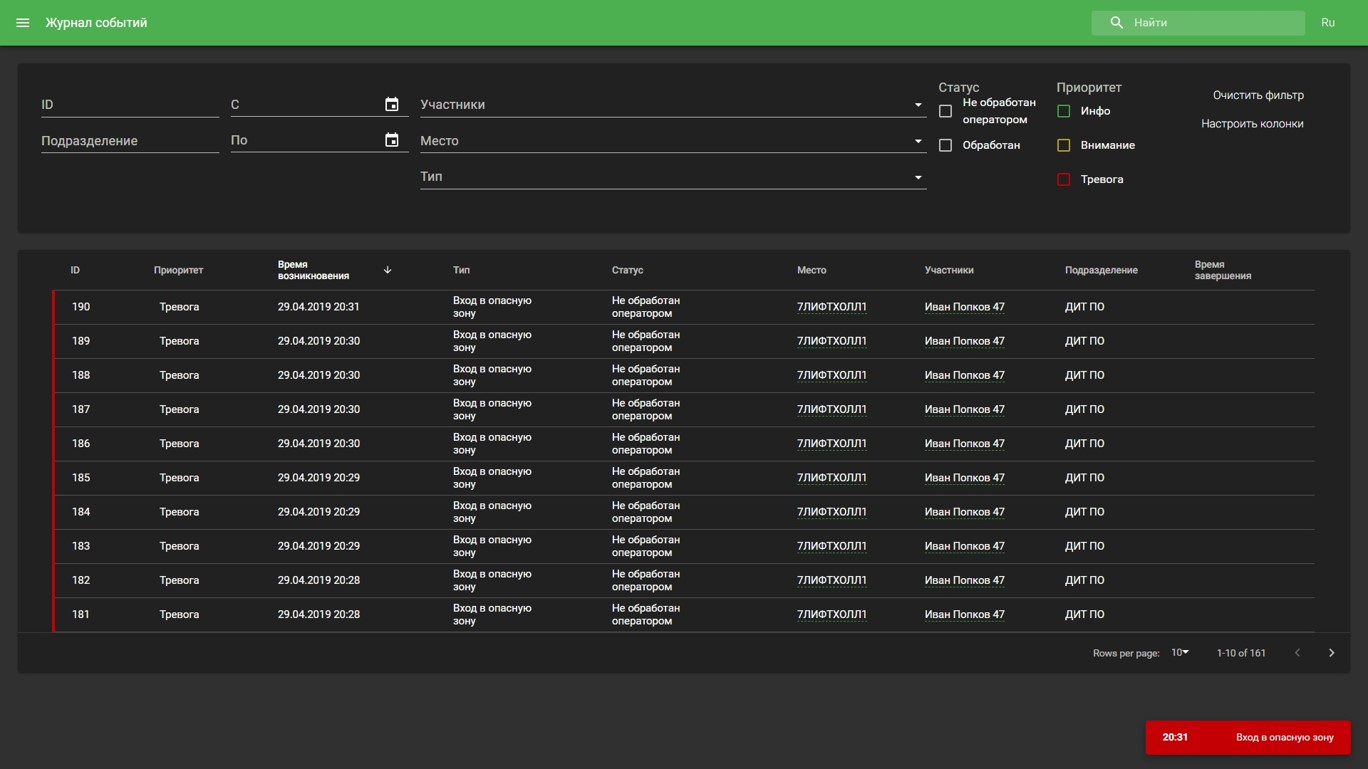
The event log.
Radio interfaces emit many times weaker than a typical smartphone. For example, LoRaWan emits packets no more than once every 10 seconds for several milliseconds. That is clearly less phone. Satellite navigation at the reception. Ultra-wideband signals give very little radiation. But you still need the documents. The serial version of the product meets the requirements for certification for use in explosive environments, IP67. The module works correctly in the temperature range from -40 to +85 ° C. The charge built into the battery device lasts more than a week. But, if we work constantly on the street, then for a few days: satellite navigation is the most energy-intensive technology here.
Module
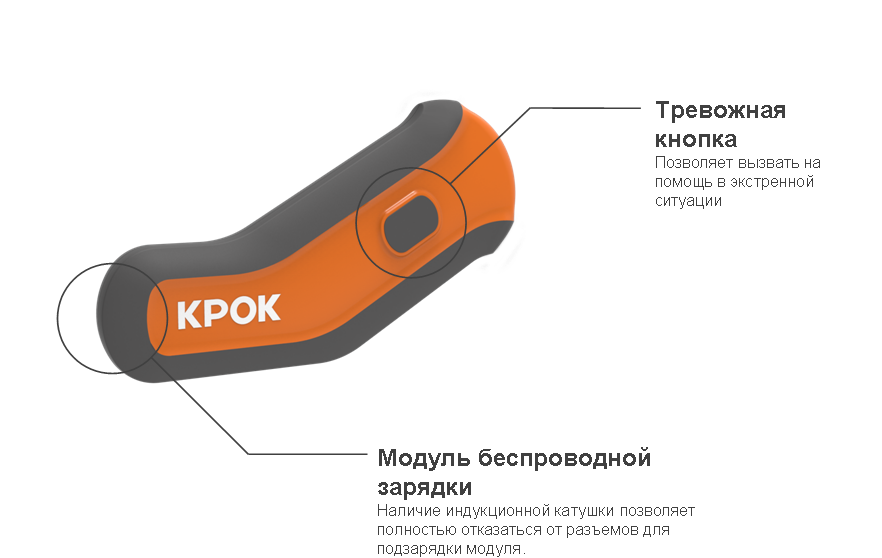

- LoRaWAN-radio interface: data transmission over a distance of 15 km; unlicensed frequency range - 868 MHz.
- Satellite navigation receiver (optional): street location with an accuracy of up to 3.5 m.
- Built-in accelerometer, compass and barometer: clarification of the position of the mark in space, control of wearing, immobility, strikes, falls.
- Alarm button, LED and vibration motor.
- BLE 5.0 radio interface: location with an accuracy of 5 m; control of wearing PPE; Hub for other Bluetooth devices and sensors (for example, a bracelet with a heart rate monitor).
- UWB-radio interface (optional): positioning in the premises with an accuracy of 30 cm in real time, high-speed data transmission channel.
- Power supply: LiPo-battery; time from one charge - a few weeks; working temperature range: -40 + 85 °
What about positioning?
There is a task of positioning inside and outside. For this GPS / Glonass and IoT-beacons for the premises. Plus barometer for vertical.

LoRa gives two or three kilometers in dense urban development, they say in the countryside 15 kilometers, there are trials from a balloon, when they passed 720 kilometers. Our device is cheaper than a good radio station (EU FT 60 - it costs 15 thousand: there are professional stations plus a headset). But we can’t answer with a voice from a helmet.
Each technology used has its own advantages and disadvantages: for example, LoRa gives a great communication range, cheap infrastructure, but low bandwidth, UWB gives high speed and accuracy, but infrastructure at large sites is expensive, satellite navigation does not require infrastructure, but quickly discharges the battery .
This whole story interacts with our IoT platform. Here are a couple of screenshots:
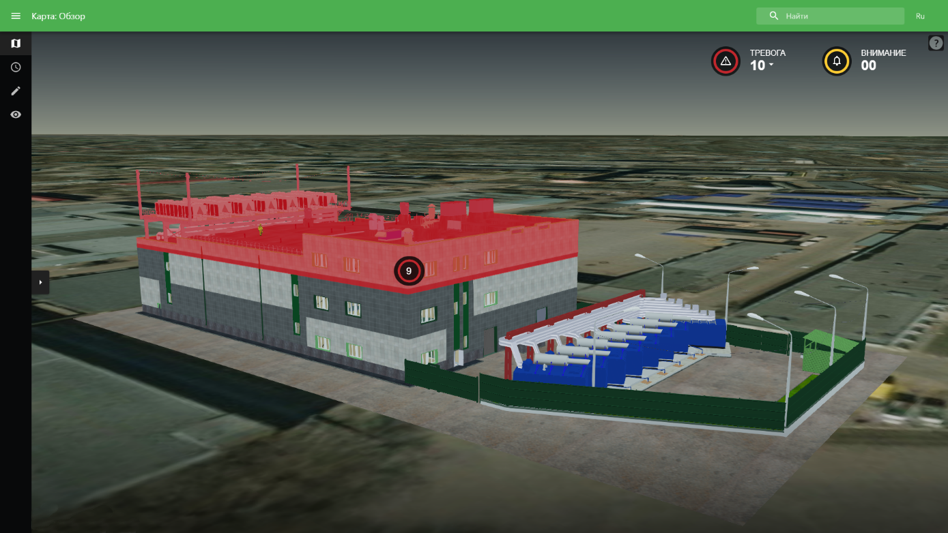
Our data center.
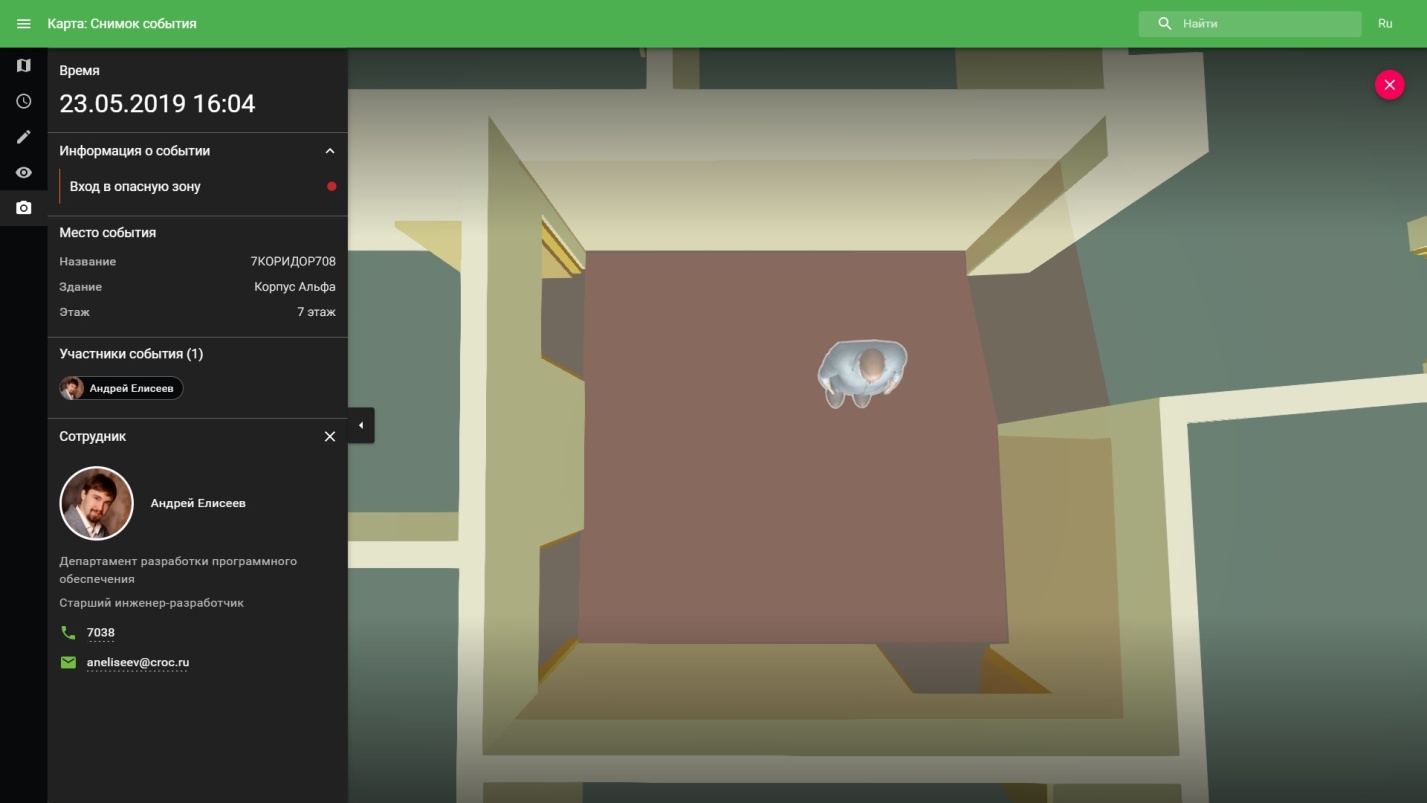
And here is a helmet!
Summarizing: your paranoia will not be wasted in a new wondrous world. Welcome!
Links
- Pro helmet on CNEWS .
- Video with the analysis of incidents TB with helmets.
- Pro RFID tags for builders and hospitals .
- About video analytics in the industry .
- Breathalyzer for productions .
- My mail is alysenko@croc.ru
Source: https://habr.com/ru/post/454052/
All Articles